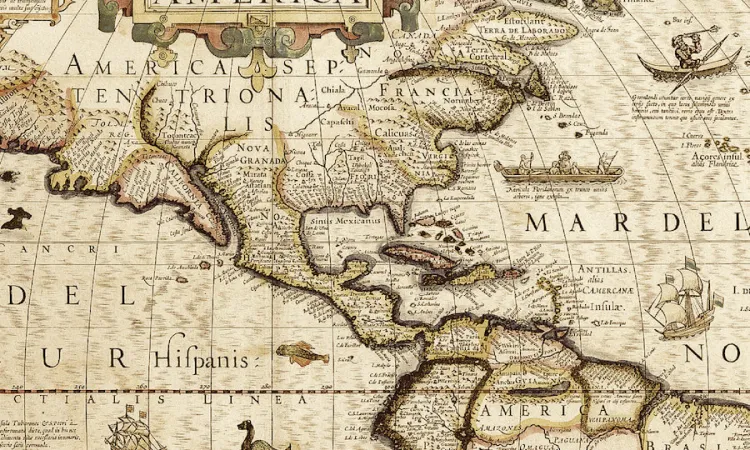Aug 16, 2016
Sébastien Racle, Sebastian Rale in America, a Jesuit missionary priest from the French-Swiss border, brought into the field with him as indispensable reference book for resolving questions of conscience an edition of Busenbaum's Medulla Theologiae Moralis (1645) when he came to New France in 1689. That now weathered volume, lent by the Maine Historical Society, is currently on view at the Knights of Columbus Museum in New Haven, Connecticut in "Mission of Faith: The Coming of the Gospel to America," through September 18.
Father Rale had volunteered to work in New France among the native Abenaki, in what is now eastern Quebec and Maine. As partisan of the Abenaki, whose language he learned well enough to compile a dictionary, and of French Catholic colonial claims, he was caught up in the fighting between French and British settlers in Maine and was killed aged 67 in 1724 in what became known as "Father Rale's War." To the French he was a martyr; to the British authorities who received his scalp in Boston he was one less danger to the security of settlers in Maine. So does the Museum's show remind us of the complex interactions, from earliest times, between faith, inculturation, native rights, mission, colonialism, and the Catholicism of manuals of casuistry.
With pins on a vast map and a series of representative brief biographies, "Mission of Faith" presents priests of New Spain, 1535-1821: Spanish Dominicans, Franciscans, and Jesuits, whose diverse missionary activity stretched from Santo Domingo to San Francisco. Objects from mission excavations in Florida are lent by its Division of Historical Resources: sherds of indigenous Altamaha/San Marcos pottery characteristic of the contact period, beads, a Spanish chisel, candlestick, locks and bolts, fragments of a bell.
We also see French missionaries of New France, 1534-1763, following the river routes of North America from Nova Scotia to the upper peninsula of Michigan and to Louisiana: Ursulines, Capuchins, Recollects, Sulpicians, and Hospital Sisters.


